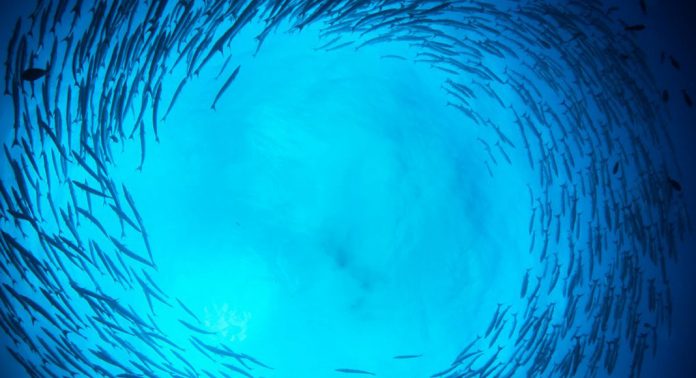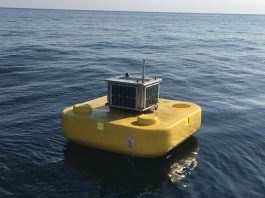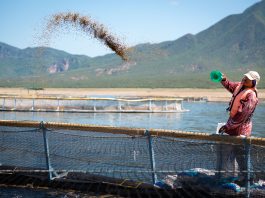Using advanced 3D multi-beam, Aquabio’s groundbreaking real-time production and planning tool aims to enhance efficiency and sustainability in aquaculture.
Aquabio is a technology-based start-up founded in January 2019. Their purpose is to use iXblue’s disruptive 3D multi split-beam sonar technology, called ‘SeapiX’, to make their own innovative product that will aid salmon and trout farming worldwide, changing the landscape of the aquaculture industry.
Now in the practical phase, they are developing their product (with the working title ‘Aquabio 1.0’) and have begun collecting relevant data from commercial salmon farms, building AI, machine learning, and software on groundbreaking, acoustic processing methods.
Sustainable aquaculture challenges
Sustainable aquaculture is a known subject for debate within the fish farming industry. Some of the most substantial challenges within aquaculture include the ability to obtain accurate real time assessments of fish stocks at all times (including biomass, weight distribution, and fish counts), that specifically correlate to sales-planning and utilise the maximum allowed biomass (MAB) on site. Further cost-driving challenges include accurate measurements of excess feed pellets, controlling the balance between over- and under-feeding, and obtaining visual, real time control of all fish in the cage, their behaviour, and the water column placement during feeding. Further challenges lie in the documentation of fish welfare and escaped farmed fish.
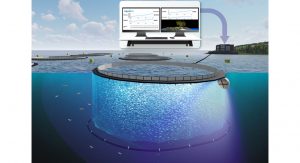 Aquabio holds the solution to all these challenges and more. In 2020, Aquabio received a grant of NOK 3.5 million from Innovation Norway (IN) to support our development project and have met the equity requirements, with 101 new investors in place. Their aim is to provide a tool that can be installed in each cage and enables fish farmers to be more eco-friendly and efficient while maintaining a key focus on fish welfare. The product comprises a SeapiX 3D multi split-beam sonar with 4K resolution and a cloud-based user panel that shows the parameters of each cage. The user panel displays figures and historic graphs, prepares reports and planning analysis, and provides 3D visualisation of all fish in the cage in real time. Aquabio 1.0 can display accurate biomass, average weight, weight distribution, and fish counts. Early tests in seabass and seabream farms showed 97% accuracy, and with new processing methods introduced by their esteemed scientists, they are aiming to achieve 99% accuracy. The product can also measure the amount of feed pellets that drop below the biomass in the cage to address over- and under-feeding.
Aquabio holds the solution to all these challenges and more. In 2020, Aquabio received a grant of NOK 3.5 million from Innovation Norway (IN) to support our development project and have met the equity requirements, with 101 new investors in place. Their aim is to provide a tool that can be installed in each cage and enables fish farmers to be more eco-friendly and efficient while maintaining a key focus on fish welfare. The product comprises a SeapiX 3D multi split-beam sonar with 4K resolution and a cloud-based user panel that shows the parameters of each cage. The user panel displays figures and historic graphs, prepares reports and planning analysis, and provides 3D visualisation of all fish in the cage in real time. Aquabio 1.0 can display accurate biomass, average weight, weight distribution, and fish counts. Early tests in seabass and seabream farms showed 97% accuracy, and with new processing methods introduced by their esteemed scientists, they are aiming to achieve 99% accuracy. The product can also measure the amount of feed pellets that drop below the biomass in the cage to address over- and under-feeding.
The SeapiX sonar
The 3D model displays all the fish as dots, meaning that it is possible to monitor and track their movements as individual fish or as a whole shoal. The SeapiX sonar is a market leader in fish classification, and the 3D model will classify all different species via precise colour-coding. For instance, see how salmon/trout interact wrasse-fish that eat the lice, or predator detection from outside and inside the cage – everything from fish and sharks to seals and sea-lions. If a salmon or trout is classified outside the cage, this would be an early indicator that the net has a hole which the salmon/trout can escape through.
The team
The team at Aquabio consists of CEO, Berit Lunde Heltne, COO and founder Mikkel Straume, CSA Peter Skaugvold (Software Engineer), and CTO Benoit Tallon (who holds a PhD in underwater acoustics). They have been fortunate to attract highly qualified project members: Sintef Ocean, one of the world leading aquaculture research institutes, are doing data acquisition on their full-scale commercial farms and will follow the development towards commercialisation to validate and verify what Aquabio can do, and the accuracy they achieve it with. Together with iXblue, the University of Grenoble and ISTerre in France will adapt the acoustic processing to enhance accuracy in salmon and trout analysis. They are also fortunate to have a PhD student from Fiskaaling at Faroe Island, who is writing his thesis on data from this research project, backed by renowned aquaculture scientists. Scientific reports based on Aquabio’s early experiments in 2019, which looked at the use of the ‘multiple scattering’ method for processing underwater acoustics, have already been published.
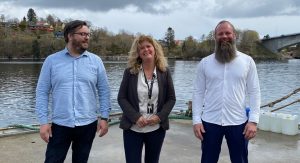
The future
In the future, Aquabio is looking at a number of possible research projects to better understand the early indicators this new method of viewing the behaviour of farmed fish can give. The intention of all of this to give the farmer, researcher, and government the tools to support the sustainable development of aquaculture.
Aquabio is also the Norwegian reseller of SeapiX within the fisheries and aquaculture sector. Together with Norwegian partners, Aquabio and iXblue drive the SeapiX technology into new segments of fish species classification and biomass estimation. They will be starting with a calanus project this summer and then reach out to snow and king crab fisheries.
Aquabio 1.0 is under development throughout 2021, and we will have a product release at Aqua Nor in Trondheim, Norway, this August. Aquabio will also be at Blue Fish in Aalesund, Norway in September 2021.
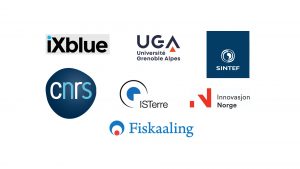
Please note, this article will also appear in the sixth edition of our quarterly publication.

